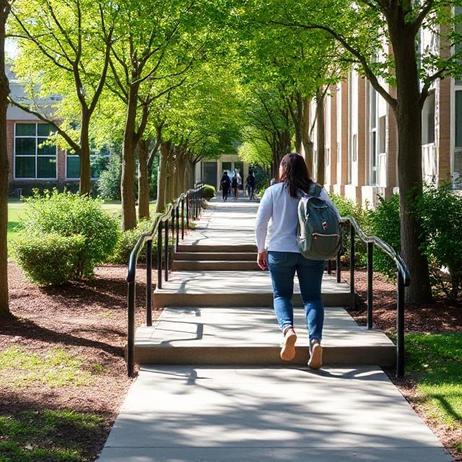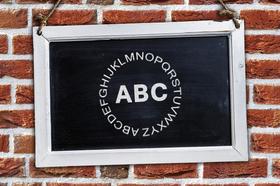Introduction
Families often assume that graduation from a private elementary, middle, or high school leads directly into a four-year college. Yet in 2025, many students are choosing alternative pathways before beginning a bachelor’s program. These options include structured gap years, accredited post-graduate (PG) or “grade 13” programs, early career exploration, and targeted academic enrichment. Each can offer clarity, maturity, and strategic advantages during the college admissions process.
This article examines how private school families can evaluate these pathways with confidence. It aligns with Private School Review’s mission to help families understand school options, admissions considerations, and pre-college educational choices. The goal is not to promote or rank any specific route but to provide clear, useful guidance so families can make informed decisions.
Why Consider an Alternative Pathway After Private School?
Although private schools traditionally emphasize direct transitions to four-year colleges, more families now explore structured interim experiences because they provide benefits that match current academic and economic realities.
Key advantages include:
Personal and academic readiness. Some students want additional time to strengthen study habits, refine interests, or mature socially and emotionally before starting college.
Exploration of academic direction. A gap year or PG program can help students identify fields they wish to pursue, which often leads to more efficient degree planning.
Enhanced admissions positioning. Some colleges appreciate applicants who demonstrate initiative, discipline, and purposeful engagement during a structured year.
Skill development. Many programs offer leadership training, global education, intensive writing courses, or athletic development.
Financial clarity. Families often use this period to evaluate long-term college costs and scholarship strategies with more precision.
When planned intentionally, these pathways can supplement the strong foundation that private schools provide.
Types of Pathways for Private School Graduates
Gap Year Programs
Gap years have become more structured and accountable in recent years. They vary widely, from service learning and travel-based cultural immersion to academic enrichment and internships.
What makes gap years relevant for private school graduates:
They offer real-world experiences that extend classroom learning.
Students can explore leadership roles, community engagement, language study, or focused skill development.
Colleges increasingly support structured gap years and may allow deferred enrollment for accepted students.
The Gap Year Association provides program accreditation standards, which can help families evaluate quality and safety.
Postgraduate or “Grade 13” Programs
Many independent schools offer PG programs designed for students who want an additional year of academic or athletic preparation. These are especially common among boarding schools.
Typical features include:
A full year of academic coursework tailored to strengthen transcripts.
College counseling designed to refine application materials, essays, and college lists.
Athletic development for students considering collegiate sports.
Opportunities to enhance executive functioning, independence, and leadership.
PG programs can be particularly effective for students who need an extra year of academic depth, had limited time to explore advanced coursework in high school, or want to reengage with the admissions process with clearer goals.
For more detail on boarding school PG options, families can explore related resources such as BoardingSchoolReview.com.
Academic Enrichment or Certificate Experiences
Some students pursue targeted learning opportunities, such as writing institutes, visual arts intensives, STEM research programs, or competitive debate and speech residencies.
These experiences help students:
Strengthen portfolios for selective college admissions.
Test interest in a potential major.
Build skills in research, analysis, collaboration, or design.
Many private schools also offer short postgraduate certificates or concentrated seminars for recent graduates.
Service Learning and Leadership Programs
Programs centered on civic engagement, environmental stewardship, or community-based service allow students to develop purpose and empathy.
Students may work with:
Local nonprofits
Youth mentoring organizations
Conservation or sustainability projects
Small-scale social entrepreneurship initiatives
These experiences support personal growth and can inform later academic choices.
What Makes the Transition Unique for Private School Graduates
Students emerging from private school environments often bring strong academic preparation and familiarity with close teacher relationships. However, alternative pathways require distinct forms of independence.
Expectations private school graduates typically carry:
Personalized guidance and structured academic planning
Small classes and immediate access to instructors
A clear, continuous trajectory from high school to college
When choosing a gap year or PG program, students may need to adjust to settings that require more self-direction, varied schedules, and a greater emphasis on self-advocacy.
Academic Mindset and Self-Navigation
Even high-performing students benefit from recalibrating expectations when shifting from a structured school environment to a year of independent or semi-independent activity.
Key considerations include:
Time management: Without a traditional bell schedule, students must plan their own work blocks and deadlines.
Goal-setting: Students should outline specific objectives, such as improving math readiness, building a portfolio, or gaining leadership experience.
Reflective practice: Journaling, mentoring sessions, or advisory check-ins help students connect experiences to future academic paths.
Private school counselors can assist graduates in setting realistic milestones before the year begins.
Resource Usage and Support Structures
Unlike private schools, which often provide extensive academic and advisory support, alternative pathways vary in structure. Families should evaluate:
The presence of academic advisors or mentors
Expectations for independent work
Access to tutoring or enrichment resources
Safety protocols for travel programs
College counseling availability
If the pathway offers limited direct support, students may need to maintain engagement with their former school counselor or an external advisor.
Social and Developmental Considerations
Graduates of smaller or more close-knit private schools may need time to adjust socially to new environments. They may encounter:
Broader age ranges and backgrounds in gap year settings
Less predictable daily structure
More independent living situations
New peer cultures shaped by travel, service, or outdoor education
To stay grounded, students benefit from consistent communication with mentors, reflective exercises, and clear personal goals.
Planning for College After an Alternative Pathway
A central reason many private school families pursue these programs is their potential to strengthen a student’s college trajectory.
For students with a defined college plan:
Request a deferral from the chosen college, if applicable.
Ensure the pathway supports rather than distracts from academic readiness.
Keep written logs or portfolios if the college requests documentation.
For students still exploring options:
Work with a counselor to narrow a preliminary college list.
Align academic enrichment with potential majors.
Maintain a timeline for testing, college visits, essays, and applications.
Related resource: Private School Review’s guide to choosing a school can help families assess campus fit and program strengths.
Step-by-Step Guide for Evaluating and Planning a Pathway (2025 Edition)
| Step | Action | Why it matters |
|---|---|---|
| 1. Self-assessment and goal setting | Identify areas for growth, academic interests, and long-term goals. | Aligns pathway choice with a student’s needs. |
| 2. Research available programs | Compare accredited gap year organizations, PG programs, or enrichment opportunities. | Ensures decisions are informed and safe. |
| 3. Consult with school counselors | Seek input from private school advisors before graduation. | Provides continuity and expert insight. |
| 4. Evaluate academic and personal structure | Determine how much independence the student can manage. | Helps select programs with the right level of support. |
| 5. Consider financial and logistical factors | Review tuition, travel, insurance, housing, and supervision. | Avoids unexpected costs or barriers. |
| 6. Build a timeline for college planning | Map SAT/ACT plans (if applicable), essays, and application deadlines. | Protects future admissions positioning. |
| 7. Document achievements and experiences | Keep portfolios, reflections, or supervisor evaluations. | Strengthens future applications or interviews. |
| 8. Revisit goals midway through the year | Reassess progress with a counselor or mentor. | Ensures the year stays purposeful. |
Challenges and Mitigation Strategies
Challenge: Lack of structure.
Some students struggle without the consistency of private school routines.
Mitigation: Choose programs with clear schedules or establish daily routines with mentor oversight.
Challenge: Difficulty maintaining academic readiness.
A year away from traditional classes may affect academic habits.
Mitigation: Incorporate reading lists, online courses, or academic workshops.
Challenge: Overly ambitious or unfocused gap year plans.
Unstructured travel or loosely planned experiences may not lead to meaningful growth.
Mitigation: Set measurable goals, create a plan, and check in monthly with an advisor.
Challenge: Misalignment with future college plans.
Some students choose programs that do not complement future academic interests.
Mitigation: Align activities with possible majors or personal growth objectives.
Expert Commentary and 2025 Trends
Independent school counselors report several 2025 trends shaping post-graduation decisions:
Colleges increasingly welcome students who pursue structured gap years or PG programs.
Many private schools continue expanding PG offerings to meet rising demand.
Students seeking STEM, arts, or athletics enrichment use this period to build stronger portfolios.
Mental health considerations play a larger role in determining whether an extra year will provide beneficial clarity.
According to school counselors, the most successful graduates are those who enter their transitional year with a clear purpose rather than using it as an open-ended pause.
Success Story Snapshot
A recent graduate of a New England independent school completed this pathway:
Finished high school with strong grades but uncertain career direction.
Enrolled in a year-long accredited gap year program combining outdoor leadership and academic seminars.
Worked closely with a mentor to refine college goals.
Built a compelling portfolio showing leadership, writing samples, and project work.
Applied to college the following fall with greater confidence and focus.
Outcome: stronger self-knowledge, clearer academic interests, and more competitive applications.
Recommendations for Parents and Educators
Encourage early conversations about whether a PG year, gap year, or enrichment program aligns with the student’s needs.
Reinforce self-advocacy by helping students schedule interviews, complete applications, and understand program expectations.
Support structured plans rather than open-ended time off.
Revisit goals regularly and maintain communication with counselors.
Emphasize purpose, safety, supervision, and academic alignment in program selection.
Conclusion
Alternative pathways after private school, including gap years, PG programs, and targeted enrichment experiences, provide compelling opportunities for growth, clarity, and preparation. With thoughtful planning and clear goals, these options can complement the strong foundation private schools provide and support a smooth, successful transition into college.
By approaching the process intentionally, families ensure that the year after graduation serves as a meaningful bridge into the next stage of a student’s academic and personal development.











